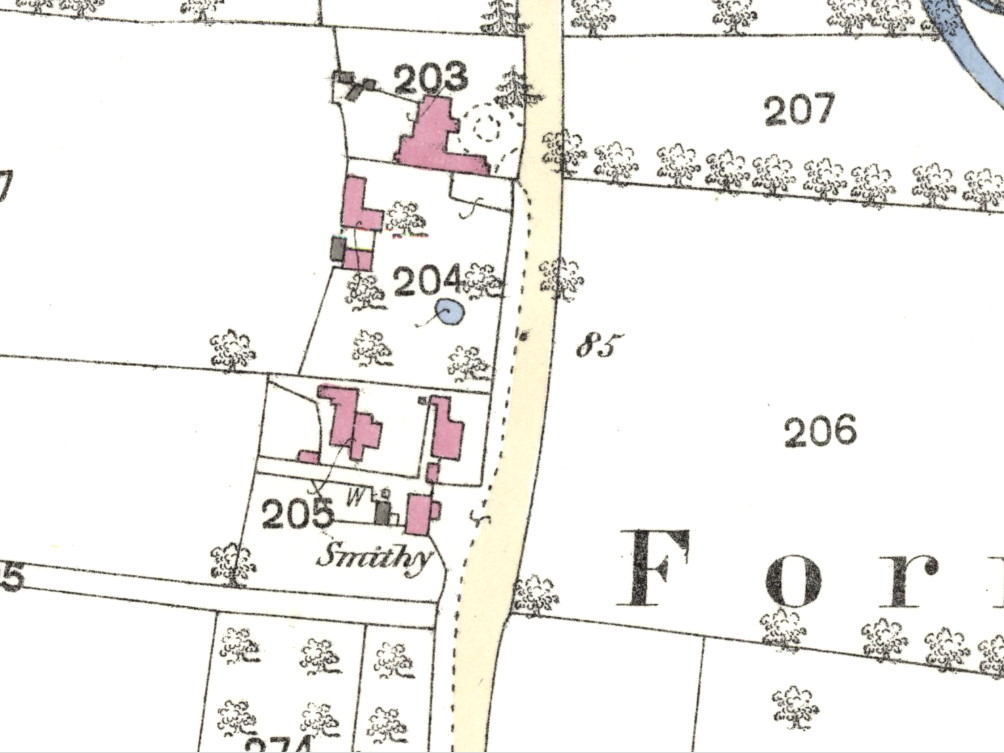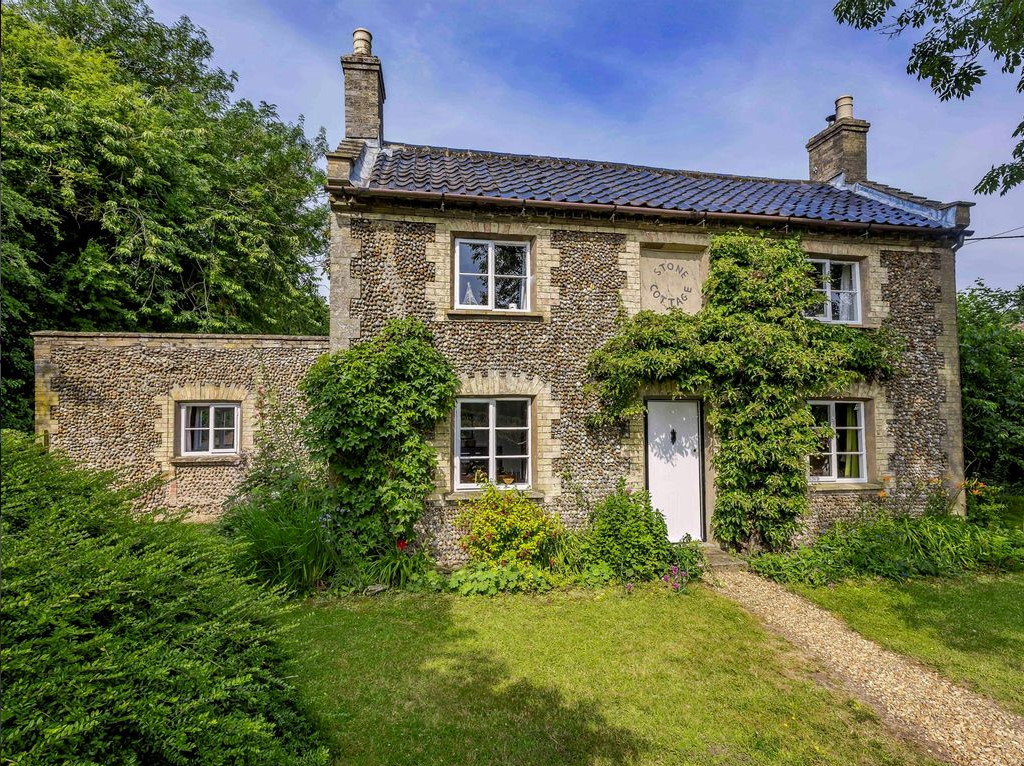
Forncett St Peter Smithy
Forncett St Peter Smithy
The smithy was located on Low Road in Forncett St Peter, between the church and what is now called Station Road. It is shown on the 1839 Tithe map, where plots 376 and 377 are recorded as "cottages and blacksmith's shop". The map shows two cottages built at right angles to the road and a set of outbuildings that would have served as the smithy.

Location of the smithy on the 1839 tithe map
We do not know when the smithy was first established, but there is reason to believe that it was run by members of the Austin family from at least 1800. On 11 May 1800 James Austin was baptised in Forncett St Peter. His father, also called James, was a blacksmith. James Austin snr. was probably taught his trade by Abraham Lansdell, a blacksmith in Carleton Rode who took on an apprentice called James Austin in 1773. (Abraham's grandson, William Lansdell, became the blacksmith in Forncett End in around 1825.)
The trade of blacksmith was invariably passed on from father to son, and so it is no surprise that forty years later, in the 1841 census, both James snr. and James jnr. were living on Low Road in Forncett and both were blacksmiths. James jnr. and his family were almost certainly living at the smithy and James snr. and his wife, who were now in their 70s, were living nearby. James Austin jnr. and his wife Mary had four sons and two daughters, and in 1841 the eldest son, Samuel (age 18), was already working with his father as a blacksmith. James Austin jnr. died, aged only 43, in 1842 and so Samuel took over the smithy.
In 1849 Samuel married a local girl, Maria Buck, and they went on to have three sons and four daughters. By 1861, Samuel was employing an apprentice to help him, and by 1871 he had his oldest son, William (now aged 17) as his apprentice. In due course, all three sons, William, James and John, were apprenticed to their father and became blacksmiths working in the family business. However, by 1881, the two eldest boys, William and James, had left Forncett for London where they were both living in St. Pancras and working as farriers.
The smithy is shown at Plot 205 on the 1884 OS map (which
was surveyed in 1883) and it's clear that much had changed since 1839. In 1869,
Thomas English had established English's Stores in a house just to the north (Plot
203) and a new cottage (Plot 204) had been built between the stores and the
smithy.

The smithy on the 1884 OS map
At the smithy, the two original cottages shown on the 1839 map had been demolished and one or more new dwellings had been built. Facing onto the road was a new cottage that still stands today and is known as "Stone Cottage". The Norfolk Heritage Explorer describes Stone Cottage as "early 19th century" and indeed it would appear that the cottage was built by Samuel Austin sometime between 1839 and 1883.

Stone Cottage on Low Road
Samuel's youngest son, John, stayed in Forncett and worked at the smithy with his father. In 1881 he was a blacksmith's apprentice and by 1891, when he was 27, he had completed his apprenticeship and was an assistant to his father.
Samuel Austin was listed in the trade directories until 1896 when he was 74 years old. His wife, Maria, died in 1898 and it appears that Samuel retired at about this time, having worked as a blacksmith for well over 55 years! However, somewhat surprisingly, his son John didn't take over the smithy. In 1901 he was living in Tharston and working as a navvy on the railway. Samuel had gone to live with his daughter, Emily, in Morston, north Norfolk.

Samuel Austin and his grandson, Clifford Gotts, in 1904 (photo courtesy of Martin Johns)
Samuel died on 28 May 1910, aged 87, and is buried at Morston but his death is also recorded on his wife's gravestone in St. Peter's churchyard.

So, a new blacksmith's name appeared in the 1900 trade directory. William Edward Daines was born in Spooner Row in 1873 and his father, Edward, was a master blacksmith. Having served his apprenticeship, William married and took over the smithy in Forncett St Peter. However, William's stay in Forncett was short-lived: by 1904 he was no longer listed in the trade directory and he had moved to Besthorpe, where he and his family appear in the 1911 census.
The smithy on Low Road may have carried on for a little while longer. In the 1904 trade directory Robert Mickleburgh is listed as the blacksmith in Forncett St Peter. Robert was the brother of Billy Mickleburgh, the blacksmith along the road in Forncett St Mary. However, in the 1908 directory Robert was no longer listed, suggesting that the smithy had closed. There was probably not enough business for two smithies less than a mile apart.
The smithy was eventually demolished, and a small bungalow now
stands on the site.
